A History of the Hill Family in 44 Lots
Our auction on 25th March will include a collection of memorabilia from W.E. Hill & Sons. John Dilworth charts the history of this important and influential English family of violin makers, dealers, and experts.
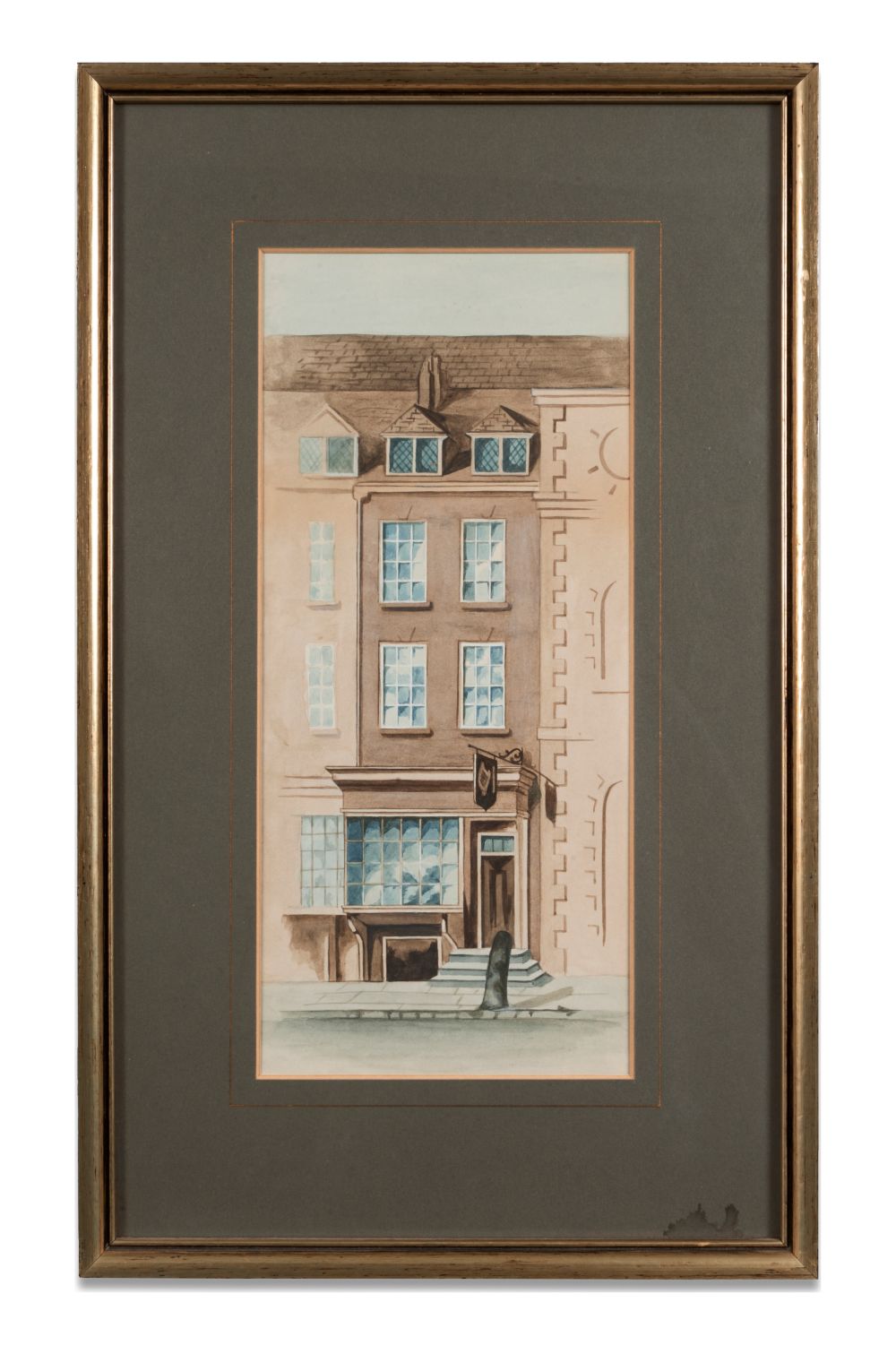
It is hard to imagine the violin trade today without the firm of W.E. Hill & Sons having existed. Their authority and integrity as violin dealers changed the face of the trade and was based on careful research, as well as long experience and great erudition. What they also achieved as diligent restorers and superb bowmakers still seems quite astonishing in many ways. Of course things have not stood still since the original firm was officially dissolved in 1992, and progress is continually being made in research and techniques of restoration, but the essential groundwork of the Hills, and essentially the brothers Alfred Ebsworth and Arthur Frederick, remains fundamental. The depth and range of the company’s records are still having a powerful effect on contemporary expertise. The recent loss of David Hill, who had remained active in the trade for many years, has left a small but important collection of mementos of this long history, some with an almost mystical aura.
The family itself has one of the longest heritages in violin making, exceeding the Gagliano and rivalling the Klotz families. They came from rustic origins in Alvechurch in Worcestershire in the 17th century, Joseph Hill being the first to establish himself in London, where he worked independently from 1753, having possibly trained with Peter Wamsley. He seems to have thrived, running a shop in the prestigious Haymarket, next to the King’s Theatre and living to enjoy retirement in equally fashionable New Bond Street from around 1780. His son, also Joseph, was less fortunate; the Haymarket workshop was destroyed by fire in 1789, and he subsequently turned to work for John Betts, whose shop was in the Royal Exchange.
His other sons William and Benjamin became musicians, indicating the strength of the family’s commitment to the music as well as the craft of the violin. The youngest son John Hill was regarded as a talented maker, but not much is actually known of him, and he left little, if anything of his own work. Which makes one of the items in this collection particularly intriguing; his heraldic breastplate, which suggests some achievement on his own terms – there is evidence that he worked with pianos in his career which lasted until 1810. This small card is a valuable contribution to what is known about him. Labels and other printed material about the next few generations of Hill violin makers family are significantly lacking, for a variety of reasons.
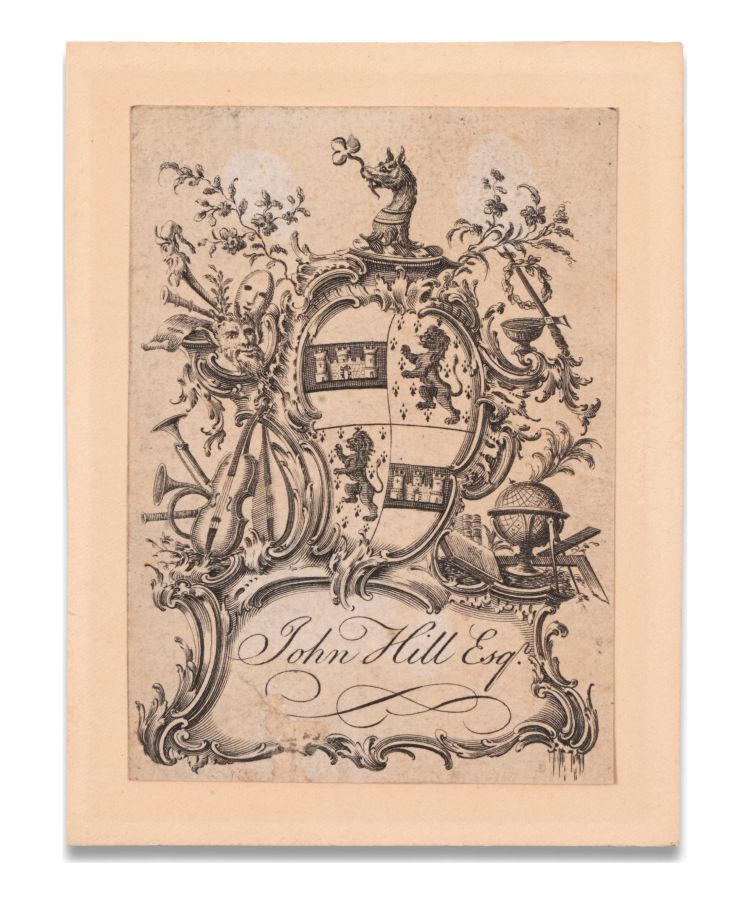
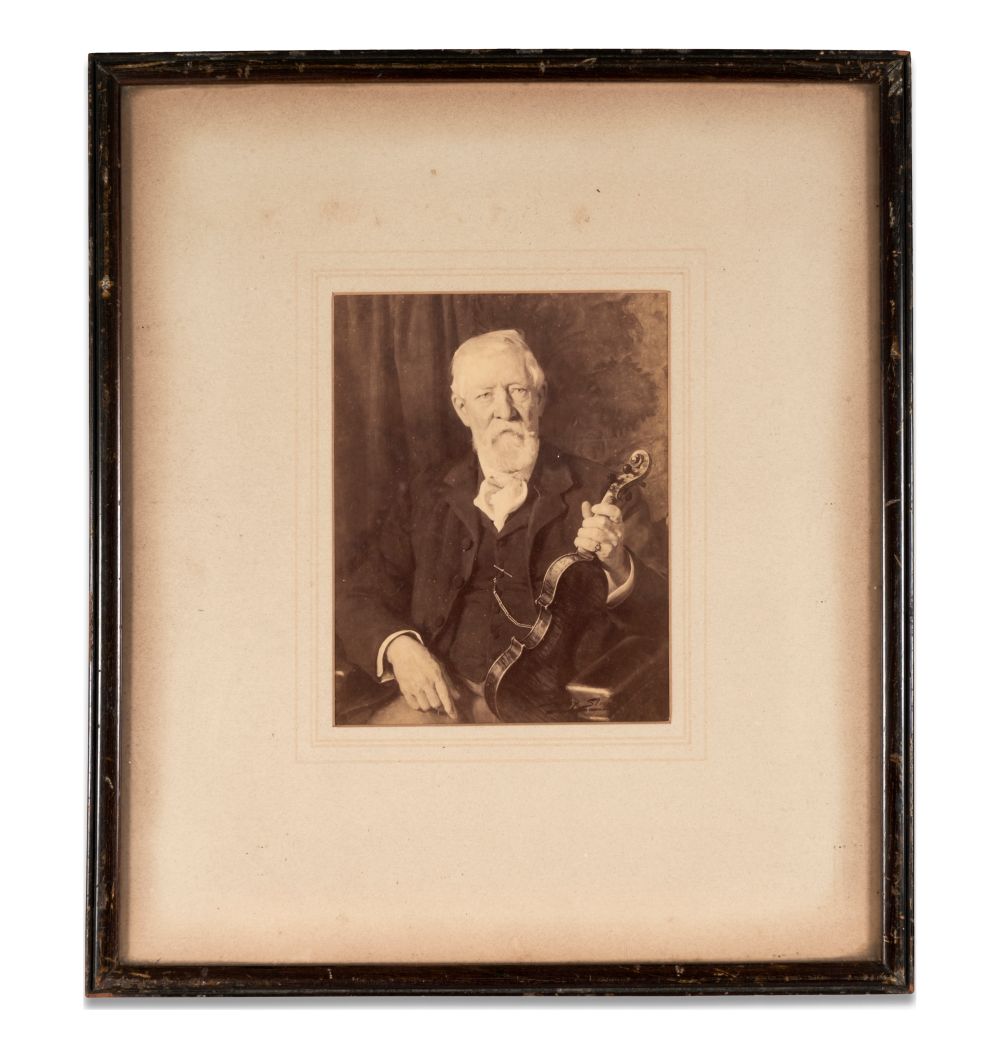
Lockey Hill arrived in London from Alvechurch some time later, but before 1772. Despite the fact that both Joseph and Lockey left a rich legacy of instruments behind them, for Lockey existence seems to have been hard. He worked for much of his life for the firm of Longmans, typical of the entrepreneurial businesses then establishing themselves in London as general music dealers. He lived in the less salubrious areas of Cheapside and Shoreditch, and resorted to crime. In 1796 he was convicted of horse stealing at the Old Bailey and suffered the death penalty. His son, also Lockey, but known to us as Henry Lockey, was equally rowdy as a youth, and in 1800 was also convicted of horse stealing. Being still only 16, he escaped capital punishment, and subsequently came to work for John Betts, as the younger Joseph had done a few years before.
Despite his difficult early life, he developed there into the most refined maker of the family by some degree, coming under the influence of Bernard Simon Fendt and pioneering the Stradivari model for both violins and cellos. His own son William Ebsworth was born in 1817, and although perhaps the most significant bearer of the family name, W.E. Hill himself left few instruments of his own.
"It is hard to imagine the violin trade today without the firm of W.E. Hill & Sons having existed."
At this time the trade in antique instruments was developing rapidly. John Betts had become the most important dealer in Italian instruments, and the demand in the market was plainly for master instruments from Cremona, as well as the work of Jacob Stainer. Businesses such as his, and Longmans, for whom Lockey worked, alongside Norris and Barnes and others, were employing anonymous outworkers, and developing skills in repair and maintenance of these imported instruments. This is where William Ebsworth Hill seems to have thrived, with an entrepreneurial spirit of his own.
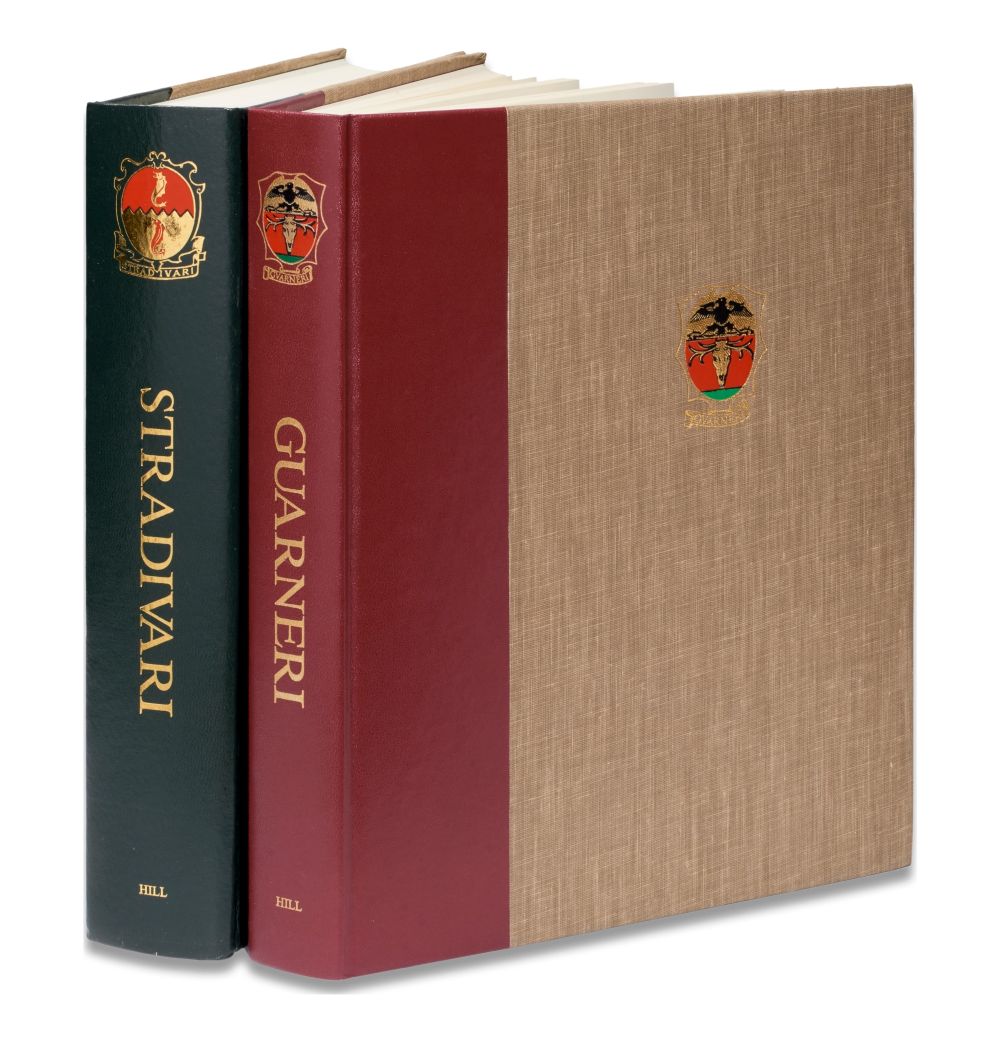
W.E. Hill eventually built a successful business on Wardour Street, not quite the prestigious address of Haymarket, but rapidly becoming the heart of violin making in London, home to Joseph Panormo, John Lott, and Georges Chanot among others. An enterprising and, we would imagine, innovative restorer and dealer, his success meant he was able to give his sons a good education and a stable family background. His eldest, William Henry, in fact became a professional violist, and played for some years in Queen Victoria’s Royal band. His younger sons were Arthur Frederick and Alfred Ebsworth, and all collaborated on the book ‘Antonio Stradivari, his Life & Work’, a work of great scholarship published in 1902, which remains a fundamental text in Stradivari studies. Alfred and Arthur’s later work on the Guarneri family, published in 1931, is of similar importance.
Aside from authorship and expertise, Alfred, and another brother Walter Edgar, who died young in 1905, trained as violin makers in Mirecourt, a remarkable and ambitious step for English craftsmen, and required of them at the very least a working knowledge of French. This brought contact with Mirecourt and Paris craftsmen who later became the backbone of the firm of W.E. Hill & Sons. The business was established in 1887 at 38 New Bond Street, and moved ten years later to 140 NBS, a building with a fine, even extravagant façade, which certainly represented a bold statement of their ambition. The accumulated knowledge of William Ebsworth, and the assiduous research of Alfred and Arthur made the company the most respected and authoritative in the world. William Ebsworth was much loved by his sons, and this collection includes a selection of ornate hand-carved bridges made by him apparently when in his seventies, which is a testimonial to a man clearly still devoted to his life-long work.
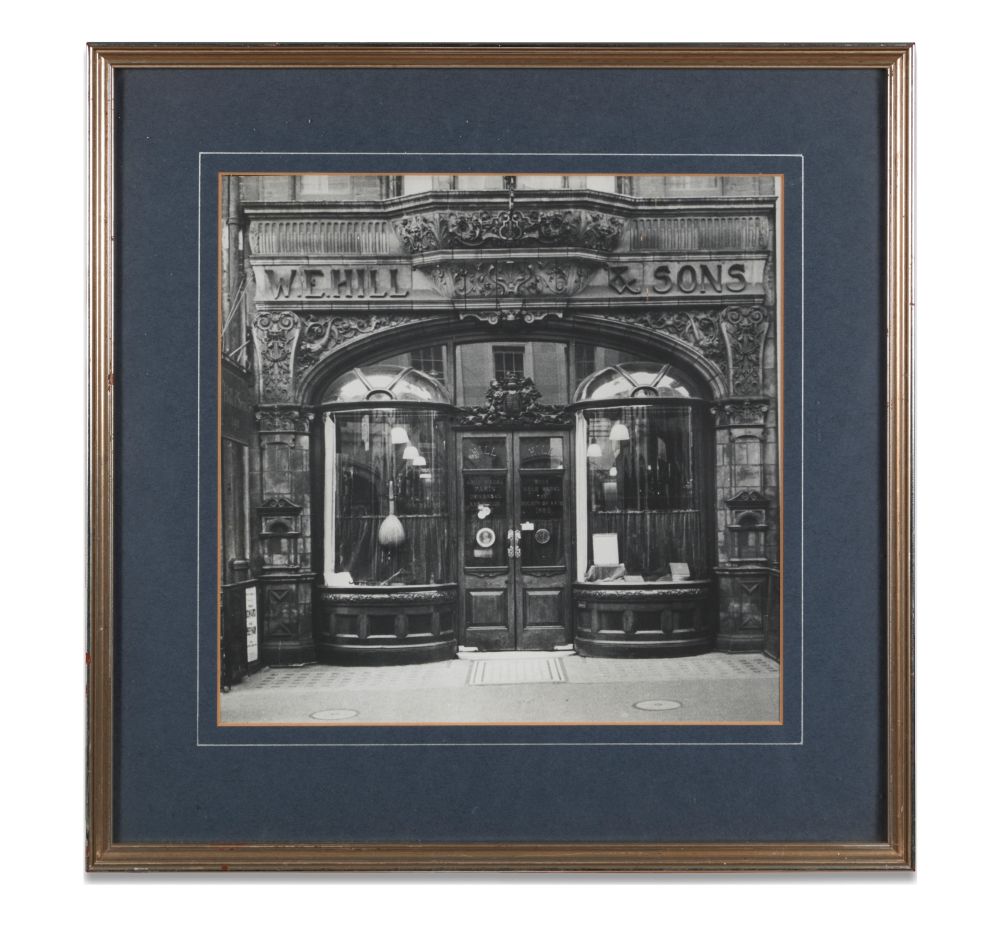
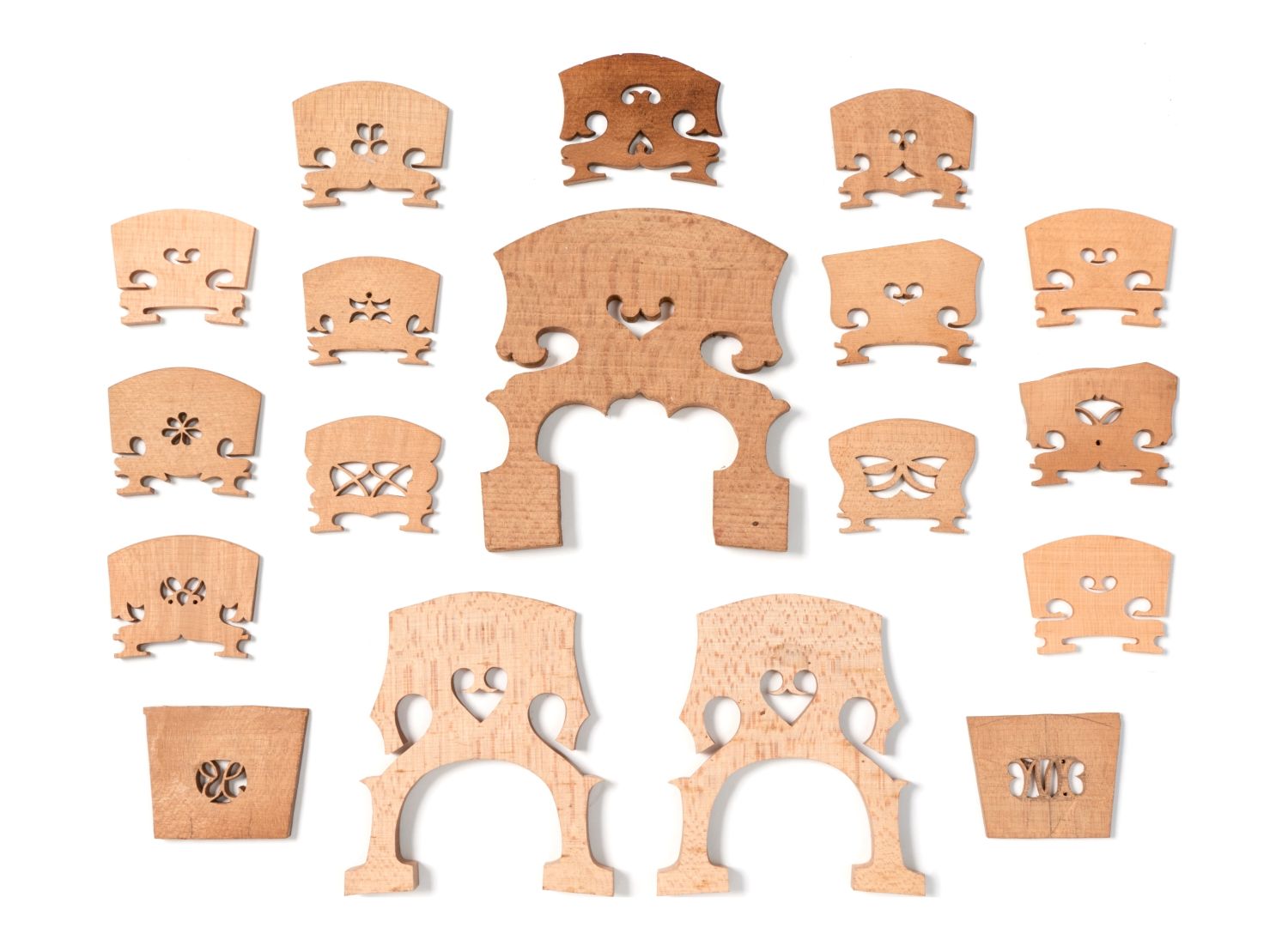
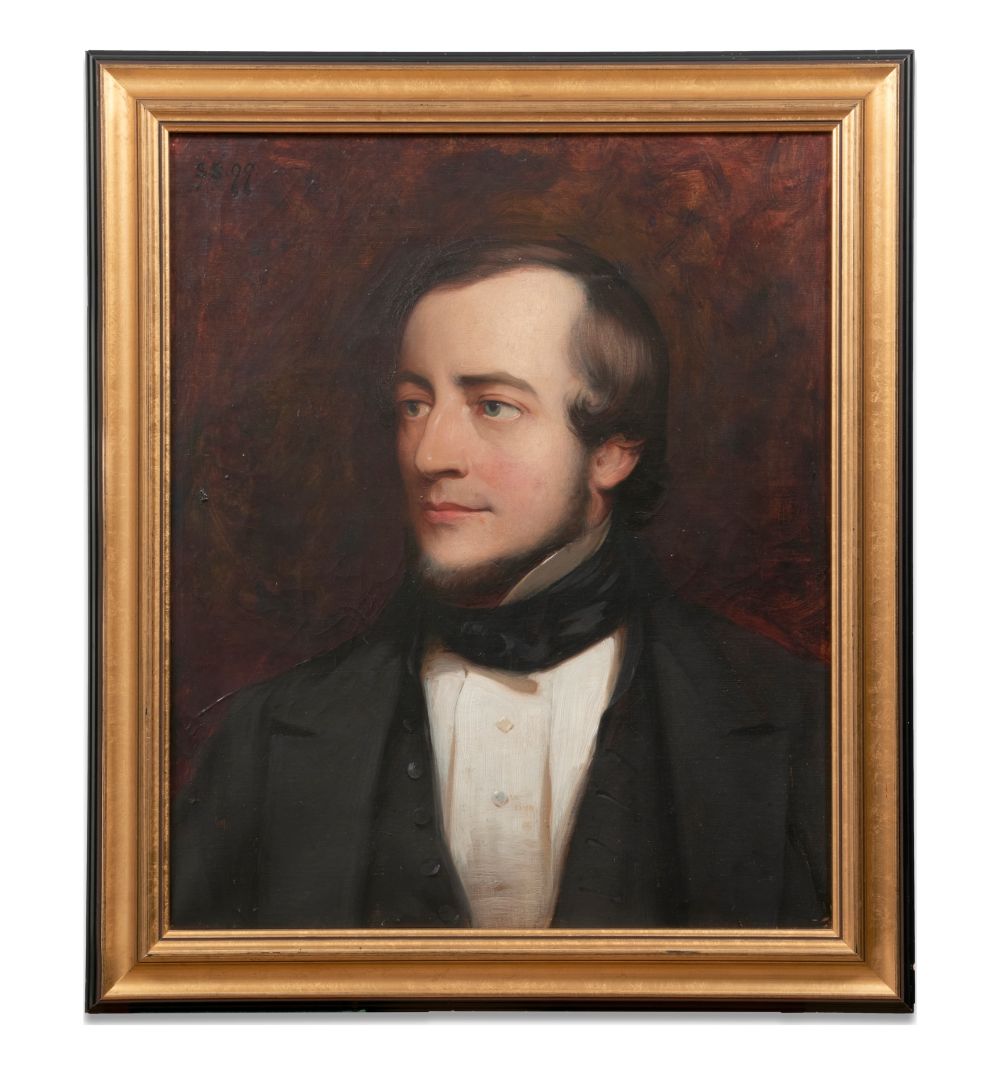
William Ebsworth died in 1895, Arthur in 1939, and Alfred followed in 1940. At that point came a sideways step in the family line when Albert Edgar Phillips, Arthur’s brother-in-law, took over the firm, having adopted the Hill name to establish continuity. He too trained at Mirecourt and worked briefly in Munich with Giuseppe Fiorini. His name is branded on a finely carved unvarnished violin neck and scroll. Amongst other pieces in this collection are intricately carved viol heads, a double bass head and a reproduction head inscribed ‘Henry Jay’ dated 1920, clearly intended to replace a missing original. Interestingly there are also cello necks ‘in the white’, although very few cellos were ever attributed to the W.E. Hill & Sons business in a workshop largely devoted to violin and bow making, alongside their celebrated restoration and repairs.
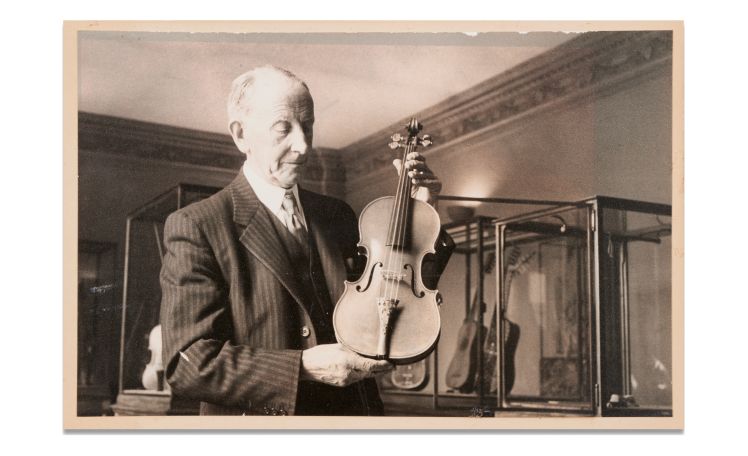
Photographs of Albert Edgar Phillips Hill in 1947 proudly showing the ‘Messie’ Stradivari in the Ashmolean Museum, to which W.E. Hill & Sons had earlier presented it in 1940, and of him still working at his bench in roughly the same period are very touching images of what appears to be an unaffected and genuine character, like William Ebsworth, thoroughly devoted to his craft. Albert’s son, Desmond D’Artrey Hill carried on the firm after his father’s death in 1981 and was supported by his sons Andrew and David until the ending of the business in 1992, the seventh generation of Hills closely bound into the history of violin making in this country.
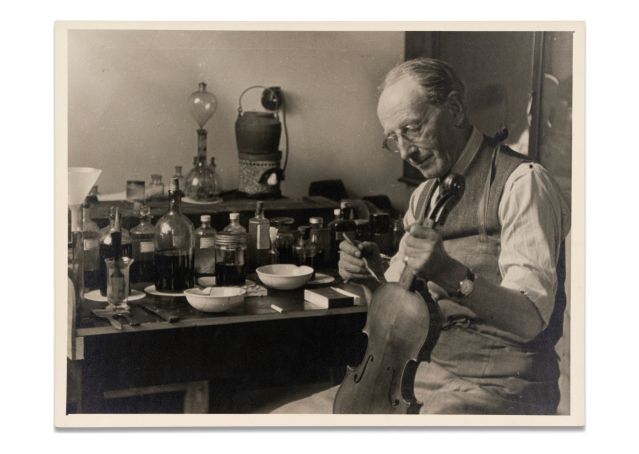
Many gems shine through in this apparently random selection of mementos and curios, clearly kept aside for sentimental as much as professional reasons. One such is an enigmatic set of three hand-forged nails pinned to a small piece of polished mahogany. It can only be assumed that these came from the neck of a Stradivari – it is hard to think what else they might signify, having been kept so respectfully for so long- but it is tantalisingly and mysteriously uninscribed.
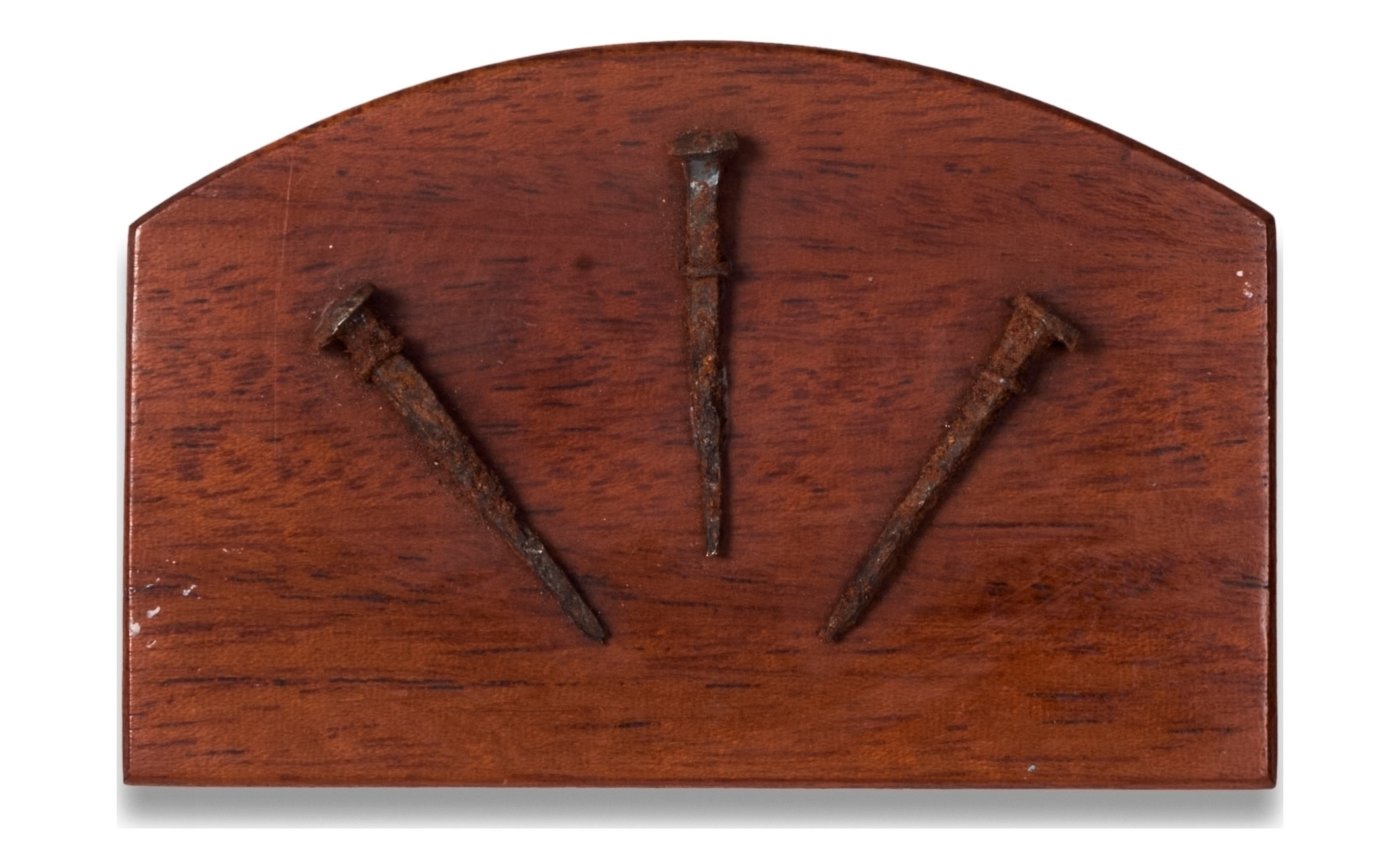
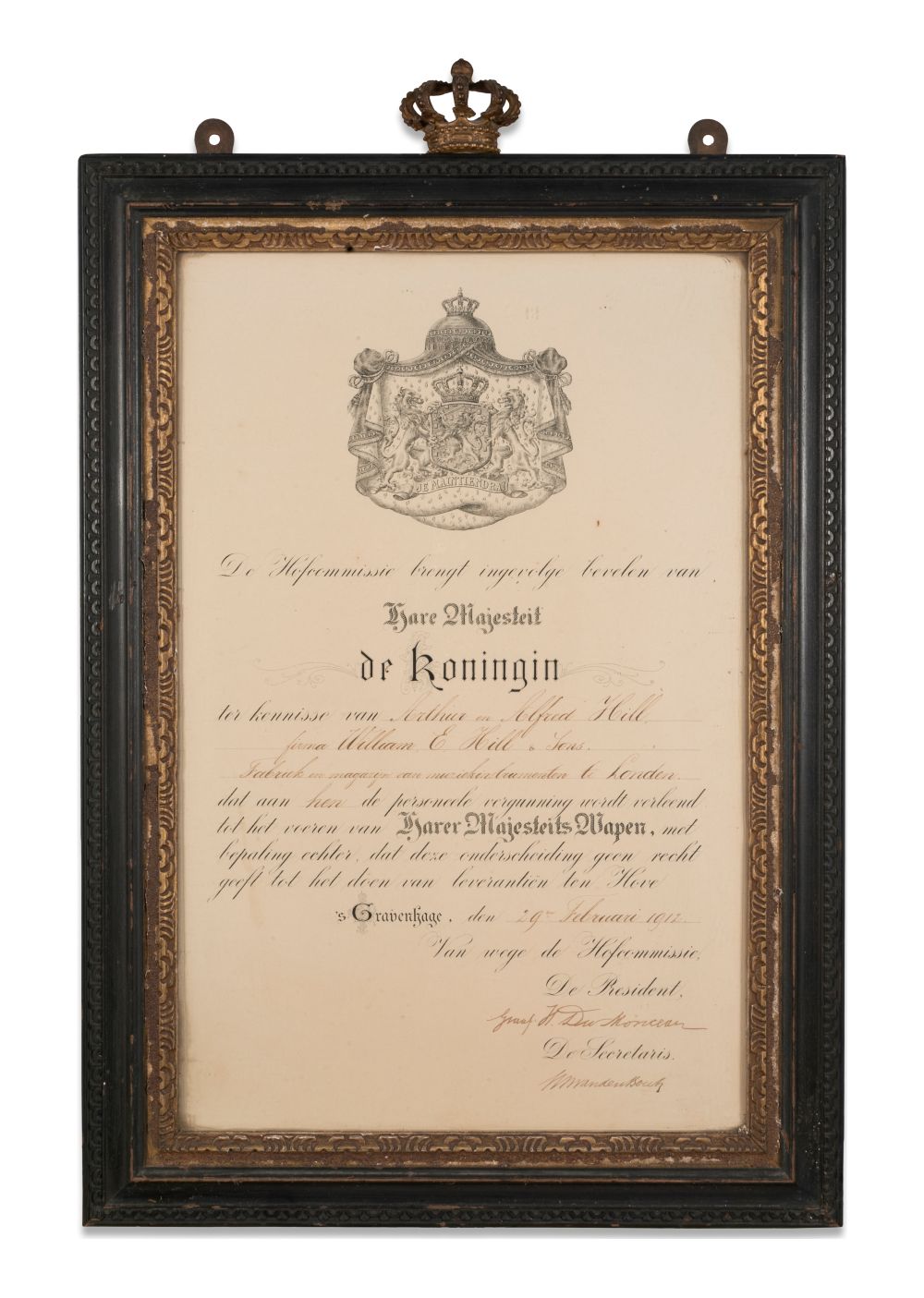
Likewise, a bundle of rosettes, some of brass, presumably from eighteenth century English guitars, but also a beautiful and delicate pearwood piece of indeterminate origin. Medals presented to the company by Ysaye and Queen Victoria, Royal Warrants from Queen Elizabeth of Belgium and Queen Wilhelmina of the Netherlands, and letters from Sir Henry Wood and Edward Elgar testify to the reverence held for the firm by both officialdom and musical society. Arthur was active in the Worshipful Company of Musicians and seems to have had a remarkable judgement and a profound appreciation of music, and the great sweep of late nineteenth and early twentieth century virtuosi with whom he kept company.
"Many gems shine through in this apparently random selection of mementos and curios, clearly kept aside for sentimental as much as professional reasons."
Particularly intriguing as a piece of personal history is Alfred Edward’s membership card for the Violin Makers and Dealers Association of Great Britain and Ireland, dated 5th July 1907 and countersigned by George Chanot, with whom the Hills were not on particularly friendly terms. Alfred himself was the president of the association, and is listed with George Hart, John Beare and both F.W. and G.A. Chanot on the committee.
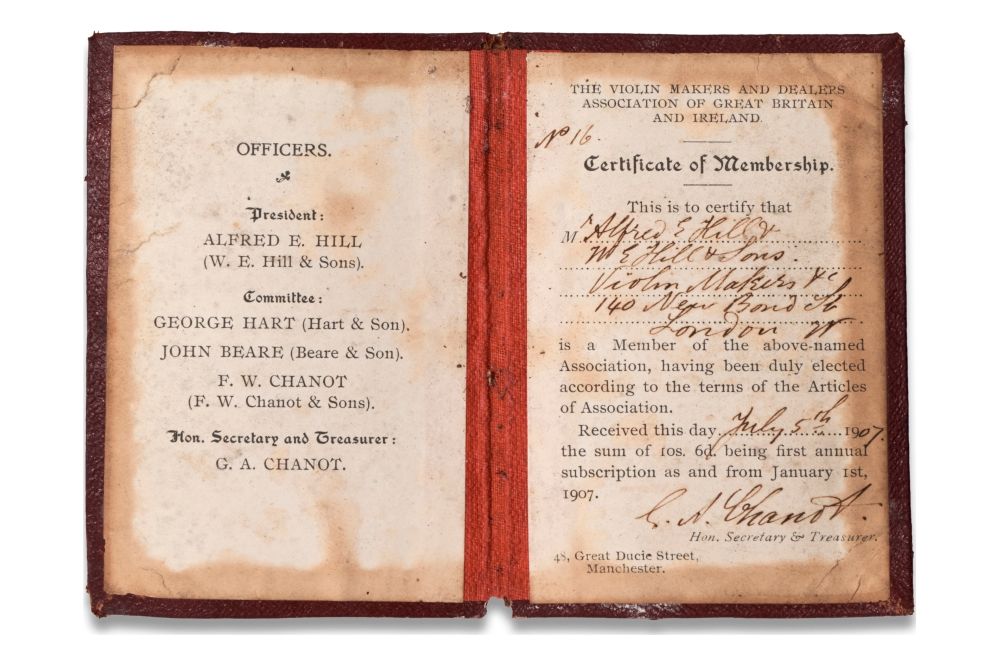
A charming early English inlaid tailpiece might seem an appropriate way to finish this selection, but amongst all is an eyecatching item – certainly the most dramatically worn fingerboard I have ever seen, with seemingly impossibly deep ruts ploughed into the solid ebony extending two octaves up beneath the E string, almost to the very tip. It would take a particular kind of skill to play so hard and so long to cause a fraction of this wear and still persist. It is inscribed ‘Vuillaume 22/5/59’ on the underside and again one can only speculate as to who the impossibly and tenaciously gifted player to whom it belonged might have been, and why it was kept so carefully and for so long. Their association with the Hill family takes their meaning and significance beyond the merely historical.

Recent Posts
Categories
- Feature Type
- Instrument Type
-
Maker
- Albani, Mathias (2)
- Amati, Andrea (8)
- Amati, Antonio & Girolamo (6)
- Amati, Girolamo II (6)
- Amati, Nicolò (6)
- Balestrieri, Tommaso (3)
- Banks, Benjamin (1)
- Bazin, Charles Nicolas (1)
- Bergonzi Family (1)
- Bergonzi, Carlo (2)
- Bergonzi, Michele Angelo (2)
- Bernardel, Auguste Sébastien Philippe (2)
- Bisiach, Leandro (2)
- Bultitude, Arthur Richard (1)
- Bussetto, Giovanni Maria del (1)
- Camilli, Camillo (2)
- Cappa, Gioffredo (2)
- Carcassi, Lorenzo & Tomaso (1)
- Ceruti, Giovanni Battista (3)
- Chanot, George Adolph (1)
- Cuypers, Johannes Theodorus (1)
- Dalla Costa, Pietro Antonio (1)
- Deconet, Michele (1)
- Fendt, Bernard Simon II (1)
- Fendt, Bernhard Simon I (1)
- Gabrielli, Giovanni Battista (1)
- Gagliano, Alessandro (2)
- Gagliano, Ferdinando (1)
- Genova, Giovanni Battista (1)
- Gisalberti, Andrea (1)
- Goffriller, Francesco (1)
- Goffriller, Matteo (1)
- Grancino, Giovanni (4)
- Grancino, Giovanni Battista II (1)
- Guadagnini, Gaetano II (1)
- Guadagnini, Giovanni Battista (7)
- Guarneri 'filius Andreæ', Giuseppe (3)
- Guarneri del Gesù, Giuseppe (5)
- Guarneri of Mantua, Pietro Giovanni (2)
- Guarneri of Venice, Pietro (3)
- Guarneri, Andrea (3)
- Götz, Conrad (1)
- Hill & Sons, W.E. (1)
- Kennedy, Thomas (1)
- Knopf, Carl Heinrich (1)
- Landolfi, Carlo Ferdinando (1)
- Lott, John Frederick (1)
- Lupot, Nicolas (2)
- Mantegazza, Pietro Giovanni (2)
- Mariani, Antonio (1)
- Montagnana, Domenico (2)
- Panormo, Vincenzo Trusiano (1)
- Parker, Daniel (1)
- Peccatte, Dominique (1)
- Platner, Michele (1)
- Pressenda, Giovanni Francesco (1)
- Rayman, Jacob (1)
- Retford, William Charles (1)
- Rivolta, Giacomo (1)
- Rocca, Giuseppe Antonio (2)
- Rota, Giovanni (1)
- Rugeri, Francesco (3)
- Sartory, Eugène (1)
- Scarampella, Stefano (2)
- Schwartz, George Frédéric (1)
- Serafin, Santo (1)
- Sgarabotto, Gaetano (1)
- Sgarabotto, Pietro (1)
- Simon, Pierre (1)
- Stainer, Jacob (3)
- Storioni, Lorenzo (3)
- Stradivari, Antonio (14)
- Stradivari, Francesco (1)
- Stradivari, Omobono (1)
- Tadioli, Maurizio (1)
- Taylor, Michael (1)
- Tecchler, David (2)
- Testore, Carlo Giuseppe (1)
- Tourte, François Xavier (4)
- Tubbs, James (1)
- Voller Brothers (1)
- Vuillaume, Jean-Baptiste (10)
- Watson, William (1)
- da Salò Bertolotti, Gasparo (2)
- Author
- Charity
-
In the Press
- Antiques Trade Gazette (3)
- Archi-magazine.it (1)
- Art Daily (2)
- CNN Style (1)
- Classic FM (2)
- ITV (1)
- Ingles & Hayday (4)
- Liberation (1)
- Life Style Journal (1)
- London Evening Standard (1)
- Paul Fraser Collectibles (1)
- Rhinegold Publishing (1)
- Sotheby's (1)
- Strings Magazine (2)
- Tarisio (2)
- The Fine Art Post (1)
- The Strad (7)
- The Times (1)
